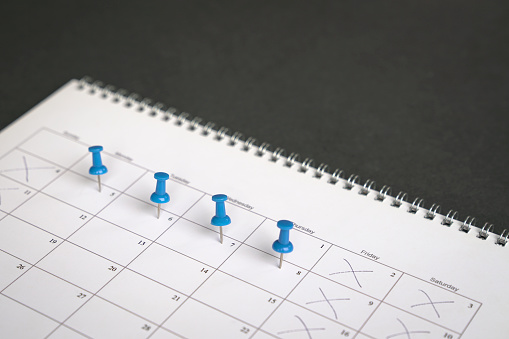I was sitting in the doctor’s office nervously. I had taken off all bottoms and layed a sheet over me to protect my vanity. There were scary looking tools beside me. In fact, when I picked up my prescription, $400 later, it didn’t make me feel any better that the box was as long as my arm. How is the size of that gonna fit in here! From the get-go, I was uneasy but excited about the procedure. I did a lot of Googling and speaking to friends and my doctor to ease any worries, many of whom recommended it, with the bonus that it may stop your period altogether! From the articles I read, I was expecting much worse than what I got.
The doctor arrived in the room and right off the bat I warned her that I might start giggling. “Oh you laugh when you’re nervous?”, she asked and I shrugged because I was pretty nervous. The nurse who prepared the tools and did the pregnancy test beforehand offered me Advil™. I had read online that they recommend you take Advil™ 90 minutes before the procedure. This simple question freaked me out. Is it really gonna hurt that much? I was kicking myself for not following the advice online. I was already regretting the fact that I was heading back to work immediately after the IUD. Everything I read said to take it easy and give yourself a few days of taking-it-easy afterwards. Basically, you are at risk of cramps, discomfort and dizziness. Of course these symptoms are subjective and each body will react differently.
I kept psyching myself up and repeating to myself how strong I was and how I have such a great tolerance to pain. This still didn’t settle those butterflies. The only thing that made me feel better was the actual procedure itself and the feeling afterwards. You know that proud, accomplished feeling you get when you stick something in your vagina? Joking aside, the IUD does not go into the vagina as if it were a tampon. It goes even deeper into the cervix. The cervix is what dilates when you are having a baby. That’s right, the IUD goes into the place a whole baby will come out of. If you ever have children down the road, the IUD is taken out and a baby will stretch it out much more than the IUD device. I’m assuming it won’t be for some time as IUDs are a 99.9% effective method of birth control that lasts anywhere from 3 to 10 years! Another pro is that you will never forget to take a pill and your hormones are consistently being regulated without your intervention. I had a lot of facts from my research and my doctor had the pleasure of listening to me during my 20 minute appointment.
I’m a talker who is very curious about everything. Naturally, this led me to ask question after question as my doctor gave me my IUD. “Is my uterus normal?”, “Is there any way I can relax my cervix to make this easier?”, “Do you ever get tired of delivering babies?”, “Have you ever had a patient who’s IUD came out?” And so on and so forth. The questions were endless until I was learning plenty about giving birth and what the experience is like for both the mother and doctor. At one point, she looked up and asked me how I was doing. I was just fine. There was cramping, obviously- a foreign body is pressing into your cervix and the pressure alone will give you cramps, but asides from that, no pain. I had withstood worse cramps naturally when I was on my period.
There was a little struggle with the cervix, considering I have never had children. IUDs were a more common procedure for women who no longer want children later in their life. Because of this, the device can fit easily as the cervix has been stretched by pushing out a baby. That being said, the rise of IUD is young people is growing and it doesn’t show sign of stopping. There are many different IUDs on the market. I was prescribed Kyleena™, my doctor recommended this one as it was developed for women under 25 who have never had children. Of course, all IUDs are generally the same and advice from this doctor doesn’t discredit any other brands or recommendations your own doctor may make. Most of my friends also had Kyleena™, but one had Mirena™. Since I am not enrolled as a full-time student, I don’t have the luxury of health care (asides from OHIP). On January 1, 2018, OHIP (Ontario Health Insurance Plan) declared that most prescriptions were free to those under 25! Fortunately for those prescribed Mirena™, you are completely covered and don’t have to pay a cent. Unfortunately, for those who are getting Kyleena™ (me!), you have to pay the full amount of $416.95.
It may seem like a large sum of money and believe me, it took me by surprise to lose that much from a paycheck, but if you crunch the numbers, it will pay for itself. I used to spend approximately $90 every 3 months for birth control (although now it’s covered in Ontario). This doesn’t even equate to the amount of money I’ve spent on feminine hygiene products (tampons, pads, etc.) over the years. Those things are expensive and your period is something you have to invest in, starting at puberty all the way to menopause. Which for some, starts at 15- and goes to 50+.
IUDs first started their epic journey in 1909 when a Polish Doctor, Dr. Richard Rickter, fashioned a intrauterine ring. Unfortunately, this method of contraception wasn’t accepted for another 50 years and for good reason, considering a slightly scary past of infection, expulsions, perforations and deaths. Over time, the shape and design of IUDs changed significantly to the much smaller, more appealing design they have nowadays. Around the globe today, intrauterine devices are the most popular form of reversible birth control, with over 160 million users! Bear in mind this is just a brief history and it is a quite fascinating one. I encourage anyone who has the time and is curious, to read into it more. There are stories dating back to putting stones in camels and testing the first ones on a physician’s wife.
The moral of the article is that it is a fairly easy, straightforward procedure that doesn’t result in too much pain. There is a feeling of discomfort but nothing you can’t withstand. You are a woman who is capable of anything. Taking birth control or control of your periods into your own hands is liberating and powerful. For me, there is still the small voice that tells me, is this too unnatural? Is it even safe? Looking throughout history, the rise of IUDs has been a positive correlation because of the positive effects and high success rate. If you have any questions regarding IUDs or my opinions towards them, please shoot me a message, I would love to hear from you. As always, I hope you are happy and healthy, making decisions that will reward you or teach you. Until next time.




